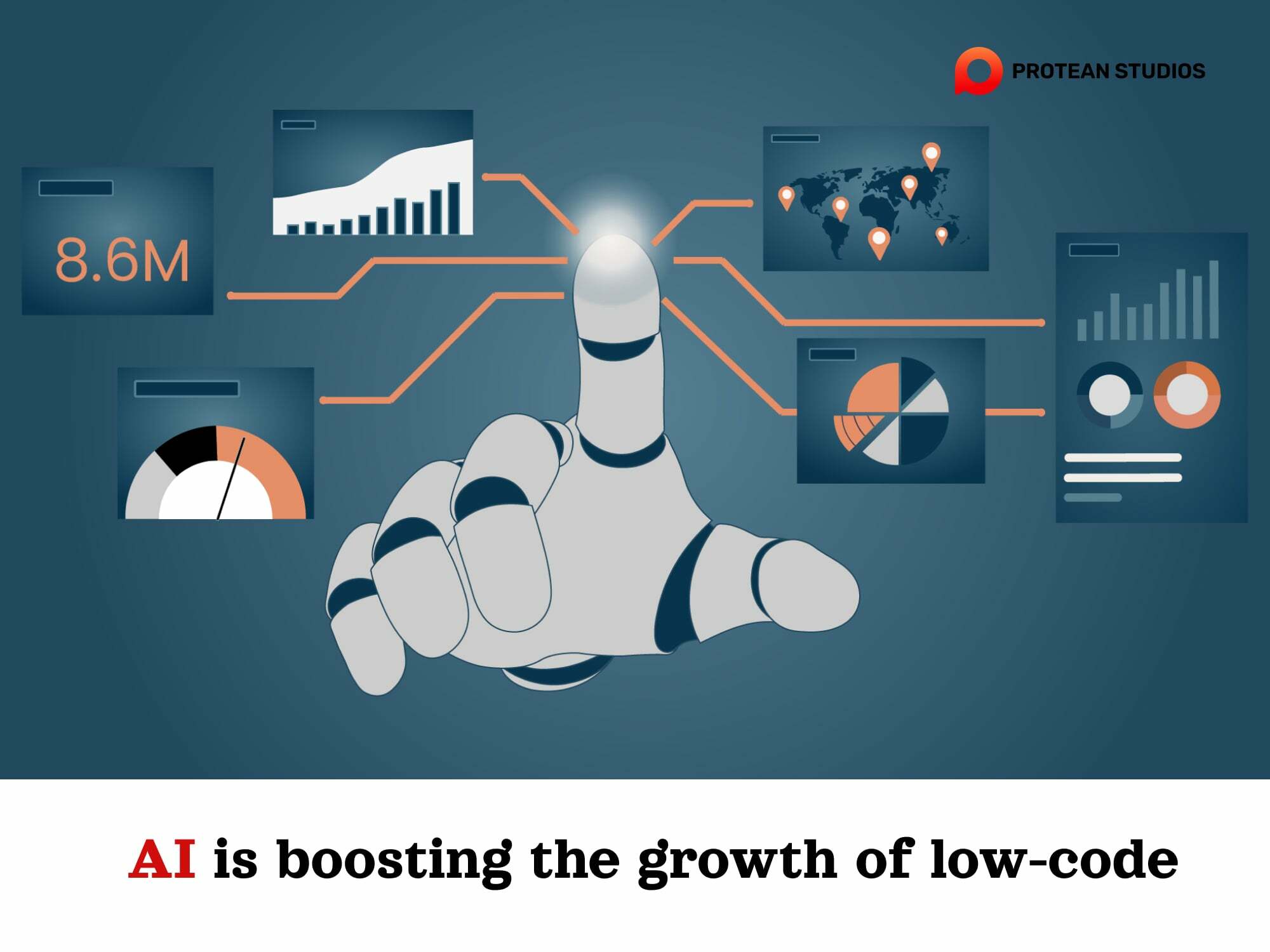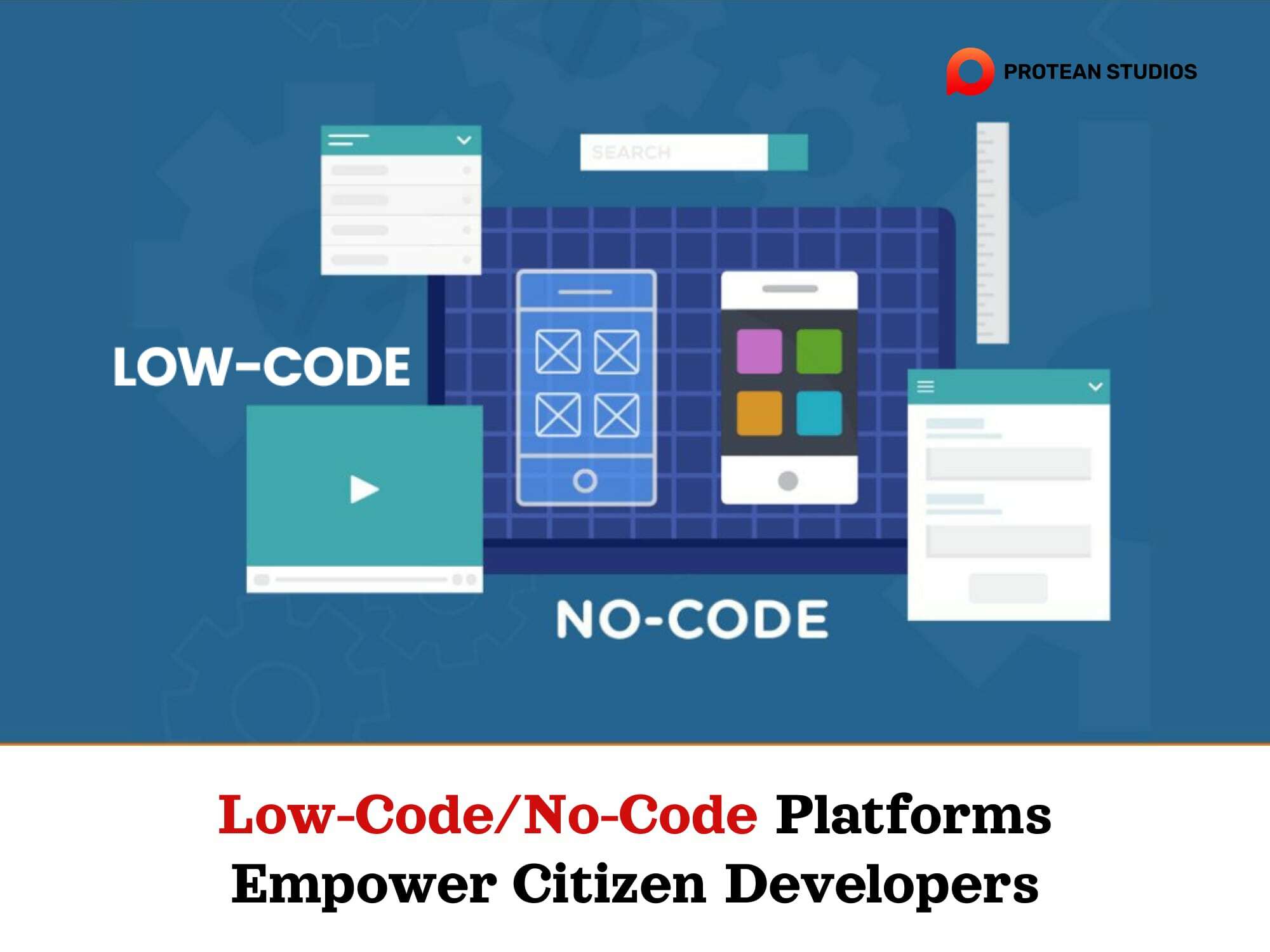In 2024, low-code development is revolutionizing the tech industry. This innovative approach allows developers and businesses to create applications with minimal hand-coding, using visual interfaces and pre-built components.
As a result, it's becoming an essential tool for accelerating digital transformation, enabling more efficient workflows, and empowering non-technical users to take part in the development process. This trend is not only democratizing software creation but also driving new levels of innovation across industries.
Getting Started with Low-Code Development: The Essentials
Let's start with the fundamental question: What exactly is low-code development?
1. The analysts chime in: Is it enough?
According to analysts, low-code is all about the rapid delivery of business applications with minimal hand-coding and upfront investment in setup, training, and deployment. Forrester, who coined the term in 2014, describes it as a way to create applications without extensive coding. Gartner adds that low-code platforms allow for the rapid development and running of custom applications by simplifying and minimizing the use of programming languages.

While these high-level definitions provide a good overview, they miss a key aspect: visual development. Protean Studios offers a more detailed definition, stating that low-code is a visual software development approach that allows developers to create applications by minimizing traditional, intricate hand-coding processes. It features a user-friendly, drag-and-drop environment that makes app development accessible to both coding novices and seasoned professionals.
Read more: Low-Code And No-Code: Why Low-Code Reigns Supreme
2. Keep it simple: too many hands can spoil your low-code success
Not all platforms that offer visual development and drag-and-drop interfaces qualify as true low-code platforms. To create mission-critical business applications that scale, you need an enterprise-grade low-code platform capable of building robust consumer applications, automating complex workflows, and modernizing legacy technology without compromise.
With this foundational understanding, let's explore why the market for low-code is growing and the key trends driving this expansion. For more in-depth information, you can refer to our Tech Hub articles on low-code.
Why the Low-Code Market Continues to Expand: Key Trends Driving the Industry
In case you haven’t heard, AI is making a significant impact on various industries, including application development and the low-code market. But there's more at play than just AI. This section will explore some low-code trends that are shaping the market's future and give us a peek into what's next.
1. Low-code is now mainstream
It's not just becoming mainstream—low-code development has already arrived. For years, we've seen headlines proclaiming, "Low-code is becoming mainstream." But the reality is, it's been mainstream for a while. A recent Forrester survey shows that 87% of enterprise developers are using low-code platforms in some capacity. Forrester also projects the low-code market will reach $50 billion by 2028.
2. AI is boosting the growth of low-code, and in turn, low-code is advancing AI
AI is speeding up low-code development, and low-code is, in turn, accelerating AI integration. With the increasing pressure to adopt AI technologies, low-code platforms provide a fast track to implementing AI strategies. Companies using low-code can bring AI-powered applications to market faster.
Advanced low-code platforms are leveraging AI to enhance the development process. Features like AI-generated application prompts are just the beginning, making it even easier and faster to develop applications, whether they include AI capabilities or not.

Learn more: Jumpstart Your Journey Into No-Code & Low-Code Development
3. Low-code will make shadow IT even more obscure
As generative AI makes coding more accessible, there's a potential increase in shadow IT—applications developed by non-professionals without formal oversight. While this might seem concerning, well-managed citizen developer programs using enterprise-grade low-code platforms can reduce these risks. With proper training and governance, these platforms can help push unregulated shadow IT activities into the background, ensuring better control and security.
4. "Platform engineering" and low-code development will work seamlessly together.
Platform engineering is a response to the growing complexity faced by developers. It offers self-service tools and workflows for tasks like continuous integration and infrastructure provisioning, reducing the cognitive load on developers. This concept aligns with the benefits of low-code platforms, which also simplify infrastructure and operational complexities.
In essence, enterprise low-code platforms already incorporate elements of platform engineering, offering integrated DevOps tools and a streamlined approach to application development.
Low-Code/No-Code Platforms Empower Citizen Developers
You might think that low-code and no-code platforms are distinct categories, and in many ways, they are. Yet, for practical reasons, they are often grouped together in the market.

Who are these platforms for?
These platforms are designed for business users or "citizen developers"—individuals who don't have a traditional software development background. They provide tools that allow these users to create the applications they need for their daily tasks.
What functions and features do they offer?
Low-code and no-code platforms offer high levels of code abstraction. They include features like model-driven or graphical programming approaches and scripting capabilities. No-code tools, in particular, allow users to build simple applications without any programming knowledge.
Other article: How No-Code And Low-Code Technology Are Changing Innovation And Design
What are their use cases?
These platforms are ideal for creating applications that address departmental needs, such as a vacation request form or an approval routing system. They are designed to simplify and streamline everyday business processes.
The year 2024 has seen explosive growth in the adoption of low-code development, offering significant benefits for businesses and developers alike. With its ability to streamline development processes, foster creativity, and help easy integration, Low-Code not only helps in cost reduction but also enhances operational efficiency. The widespread adoption of this technology underscores the importance of embracing cutting-edge innovations to maintain a competitive edge in the market.
---------------------------------
Protean Studios, as a reliable IT outsourcing company, has a unique opportunity to make a mark in the realm of low-code development. Contact us today to discover how Low-Code can revolutionize your development processes, optimize resources, and deliver customized software solutions tailored to your specific needs. Don't miss out on the chance to lead in this new technological era!




